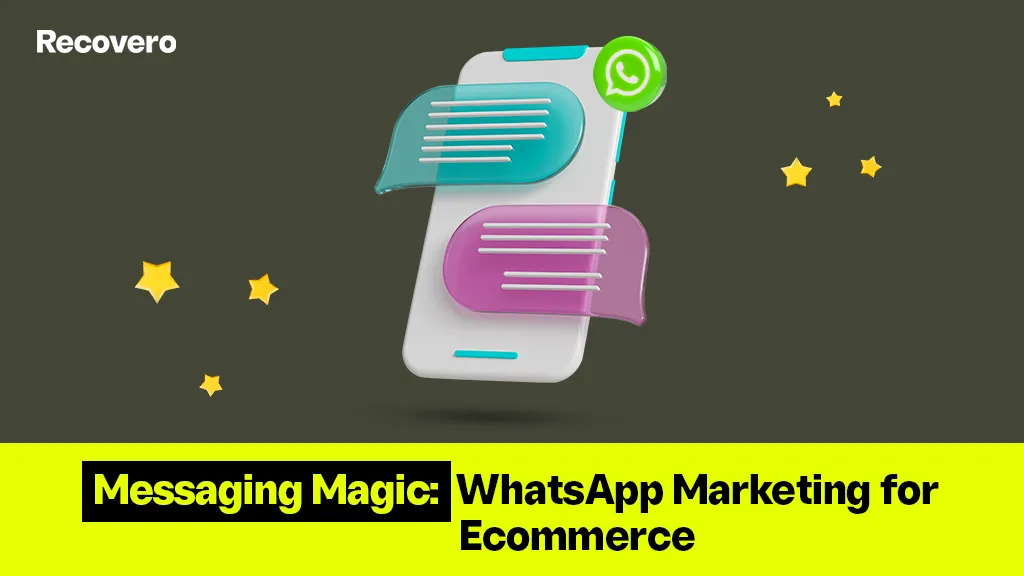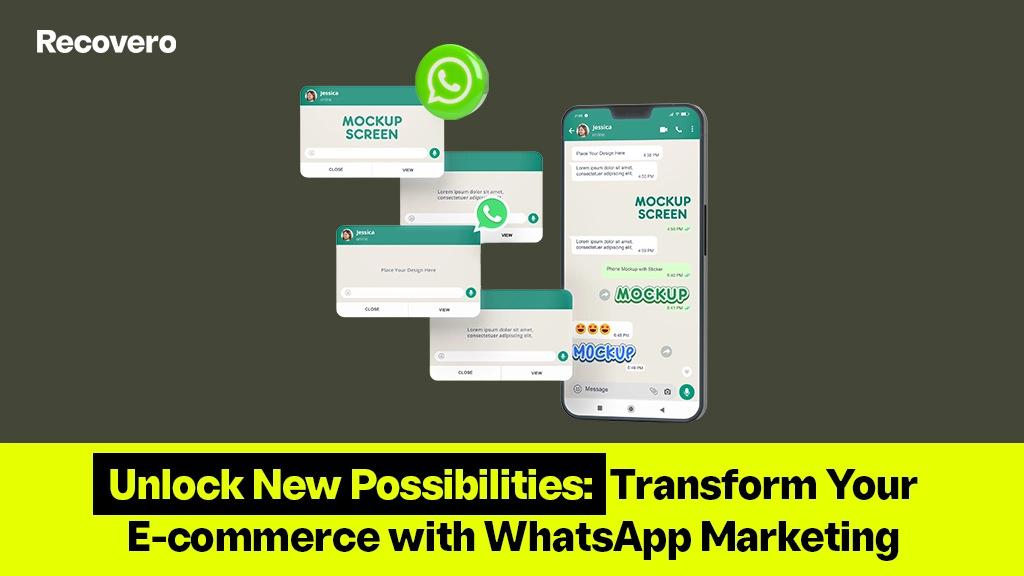WhatsApp templates have become an indispensable tool for businesses. They help to engage with their customers effectively. This blog will explore the best practices for designing and utilizing WhatsApp templates. That will help to create engaging conversations that drive business success.
Understanding WhatsApp Template Types
WhatsApp templates can categorize into two main types:
- header
- and body templates.
Header-type templates are designed to convey essential information concisely, while body-type templates are. That allows for more explicit content to be shared. Understanding these template types’ purpose and appropriate usage is crucial for effective communication.
Designing Engaging WhatsApp Templates
Consistent Branding
Maintaining a consistent brand identity across WhatsApp templates is paramount. It helps to build brand recognition and trust with customers. Incorporating brand elements such as
- logos,
- colour schemes,
- and typography ensures a cohesive brand experience and strengthens the brand perception.
Personalization and Customization
Personalizing WhatsApp templates according to the target audience’s preferences. And enhances customer engagement. Tailoring the templates’
- content,
- tone,
- and language to specific customer segments. That creates a sense of relevance and fosters stronger connections with the recipients. Dynamic content insertion allows for real-time personalization. Where template fields are populated with relevant information based on individual user data.
Clear and Concise Messaging
In the realm of instant messaging, clarity and conciseness are paramount. Crafting templates with clear and concise messaging. That ensures that the intended message is conveyed to the recipient. By avoiding unnecessary
- jargon,
- complexity,
- and information overload,
businesses can capture the attention of users and deliver their message with impact.
Compliance and Legal Considerations
Adhering to the WhatsApp Business Policy Guidelines is crucial. It helps to maintain a positive relationship with WhatsApp. And ensure that templates follow the platform’s rules and regulations. Familiarizing yourself with the
- policy requirements
- and keeping up-to-date with any changes
is essential to prevent violations that may result in restrictions or account suspension.
Opt-In and Opt-Out Mechanisms
Offering clear opt-in options allows users to provide consent. That ensures the communication is permission-based and by privacy regulations. Providing easy opt-out procedures enables users to unsubscribe from template messages. That shows respect for their autonomy and privacy preferences. Including clear instructions for opting in and out promotes a positive user experience.
A/B Testing and Optimization
Conducting A/B tests with different templates is essential. It allows businesses to compare the effectiveness of various strategies. By testing variations in
- content,
- design elements,
- and call-to-action prompts,
companies can gather valuable data on user engagement. And measure the success of different templates. Analyzing metrics such as
- open rates,
- response rates,
- and conversion rates provide insights to optimize template performance.
Monitoring User Engagement
Monitoring user engagement metrics is crucial. It helps to understand how recipients interact with WhatsApp templates. Tracking metrics such as open rates,
- response rates,
- and click-through rates
helps businesses check the effectiveness of their templates. Analyzing user behaviour and feedback allows for iterative improvements to templates. That ensures that they resonate with the target audience and drive desired actions.
Template Maintenance
Regular Review and Updates
Keeping WhatsApp templates up-to-date is essential. It helps to reflect changes in;
- business offerings,
- promotions,
- or industry trends.
Reviewing templates and incorporating necessary updates helps maintain their relevance. Businesses can ensure that their messaging remains fresh by dedicating time. And resources for template maintenance. And also aligned with their communication strategy.
Categorization and Organization
Implementing an efficient template management system facilitates easy retrieval of WhatsApp templates. Categorizing templates based on
- themes,
- customer segments,
- or customer journey stages
allows for streamlined template selection and deployment. With a well-organized template library, businesses can save time and effort.
Importance of Multilingual Templates
Reaching a Diverse Customer Base
In an increasingly globalized world, businesses often interact with customers who speak different languages. Creating multilingual templates allows businesses to communicate with diverse customer segments. And helps to overcome language barriers and ensure inclusivity. Companies can enhance customer satisfaction and engagement, that too by providing content in customers’ preferred languages.
Language Localization Strategies
Developing effective multilingual templates requires thoughtful language localization strategies. Translating templates accurately while considering
- cultural nuances
- and preferences
are crucial for maintaining relevance and resonance with different language-speaking customers. Collaborating with
- professional translators
- or localization experts
can ensure the highest quality and appropriateness of the translated content.
Leveraging Rich Media in Templates
Adding Visual Elements
Incorporating visual elements such as
- images
- and graphics
into WhatsApp, templates enhance the visual appeal and capture recipients’ attention.
Visual elements can
- convey messages,
- evoke emotions,
- and showcase products or services.
Selecting and optimizing visual content for WhatsApp’s format ensures an engaging experience for users.
Video and Audio Integration
Integrating videos and audio clips into templates can further enhance user engagement. By leveraging the power of multimedia, businesses can deliver more interactive messages.
- Video tutorials,
- product demonstrations,
- or audio clips
can provide extra information. It helps to evoke emotions and leave a lasting impression on recipients.
Enhancing Accessibility in Templates
Text Formatting and Structure
Ensuring proper text formatting and structure in templates contributes to their readability.
- Headings,
- subheadings,
- and bulleted lists
help organize the information and facilitate user scanning.
Integration with Chatbots
Benefits of Chatbot Integration
Integrating WhatsApp templates with chatbots offers several benefits. Chatbots enable automated and personalized conversations with customers. Thus provides instant responses to common queries or requests. By incorporating templates into chatbot responses, companies can
- streamline communication processes,
- deliver consistent messaging,
- and provide quick and efficient customer support.
Seamless Template-Chatbot Integration
To ensure a seamless user experience, the integration between WhatsApp templates and chatbots should be well-executed. Designing templates that align with chatbot responses. And also, maintaining a coherent conversation flow is essential. Smooth transitions between templates and chatbot interactions create an engaging user experience. Thus enhancing customer satisfaction and trust.
Measuring Success with Analytics of WhatsApp Templates
Tracking Key Performance Indicators
Measuring success requires monitoring key performance indicators (KPIs) such as
- open rates,
- response rates,
- and conversion rates.
These metrics provide insights into template performance and user engagement. By tracking KPIs, businesses can evaluate the effectiveness of their templates. And make data-driven decisions to optimize their messaging strategies.
Iterative Improvement with Data Insights
Analyzing data insights and user behaviour allows for iterative improvements to WhatsApp templates. By identifying
- patterns,
- trends,
- and areas for optimization,
businesses can refine their templates. It helps to meet customer expectations and preferences better. Incorporating data-driven insights into template design and content ensures continuous improvement.
Educating Users about WhatsApp templates
Best Practices for Users
Providing clear instructions on how to use WhatsApp templates helps users understand their purpose. Educating users about template usage promotes better engagement and reduces confusion or misuse.
Educating users about the best practices for interacting with WhatsApp templates. It empowers them to make informed choices and engage.
- Ensuring Data Privacy and Security, and
- Protecting User Information
is crucial when using WhatsApp templates. Implementing encryption and data security measures helps safeguard user information. It helps to protect from unauthorized access or data breaches.
Secure Template Storage and Access
Securing template storage and controlling access to templates is essential. It helps to prevent unauthorized usage or modifications. Implementing role-based access controls ensures that only authorized individuals can
- create,
- edit,
- or deploy templates.
By maintaining strict rules, one can ensure the integrity of messaging processes.
Collaboration and Workflow Management With WhatsApp templates
Team Collaboration on Template Creation
Collaborating with different teams can bring diverse perspectives and expertise. Involving
- marketing,
- content,
- design,
- and legal teams
ensures comprehensive template development and adherence to
- brand guidelines,
- legal requirements,
- and messaging objectives.
Effective communication and coordination among team members streamline the template creation workflow.
Approval and Review Processes
Implementing apparent approval and review processes ensures quality control and compliance. Establishing checkpoints for template review and feedback helps identify any potential issues. Well-defined approval processes
- cut errors,
- maintain brand consistency,
- and mitigate non-compliance risk.
Conclusion
In conclusion, following best practices for WhatsApp templates allows businesses to create
- engaging,
- personalized,
- and compliant conversations with their customers.
By understanding
- template types,
- designing templates with branding,
- personalization,
- and clear messaging,
- ensuring compliance, etc
businesses can maximize the impact of their WhatsApp templates. And also foster strong customer relationships. With these best practices in place, one can leverage WhatsApp templates as a powerful tool for communication.




